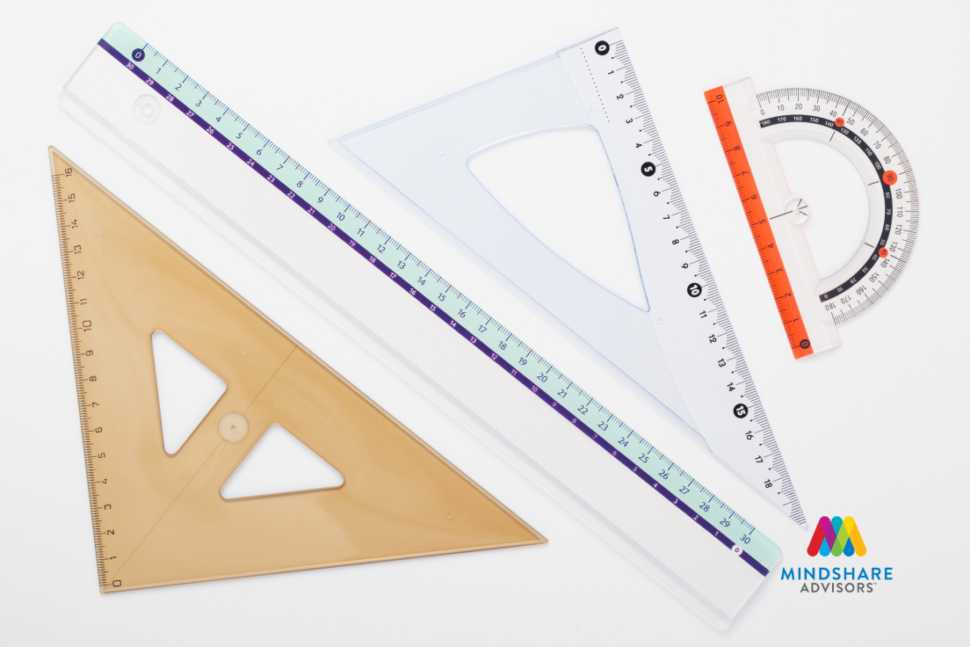
RoR is the Right Mindshare Metric
In a world of metrics and accountability, we at Mindshare Advisors are often challenged to address the ROI on mindshare programs. Because mindshare is nuanced – you know it when you have it – it’s just not that easy to show in a data-driven scorecard compared to classic metrics like proposal counts, new customers, return buyers, revenue, etc. (For a little ROI on trade shows humor, see co-founder Mike Collado’s recent LinkedIn post)
The more appropriate metric for mindshare is Return on Relationship (RoR).
The concept of RoR has been around for at least a couple of decades. Its genesis is relationship marketing, a concept espoused by Don Pepper and Martha Rogers in the groundbreaking book, The One to One Future: “Instead of market share, the goal of most business competition will be share of customer – one customer at a time.”
But RoR really found footing in social media marketing. Social media has empowered organizations to execute relationship marketing in powerful ways to achieve mindshare. In response to the inevitable (and appropriate) question of, “What’s the ROI of social media marketing?”, marketers often invoke RoR. In the book, Return on Relationship, Ted Rubin and Kathryn Rose observe: “RoR (Return on Relationship) is the value accrued by a person or a brand due to nurturing a relationship. ROI (Return on Investment) is simple dollars and cents. RoR is the value (perceived and real) that will accrue over time through loyalty, recommendations, and sharing.”
Admittedly, RoR is soft and subjective – a concept rather than a formula. But, in the “connection economy”, Seth Godin counsels, “Trust and relationships are the new currency.” (Read more about trust as a product of mindshare)
Frontline sales is the biggest benefactor since they own the relationship. But that is not the entire story. RoR starts with market-level mindshare. From the point a customer first hears your promise, value proposition, and witnesses success, your organization is experiencing a return which may manifest as the phone starts to ring, or you’re short-listed on a bid, or – even better – you’re the only call the buyer made! (Read why mindshare is much more that brand awareness)
Indeed, understanding and measuring RoR is more important than ever. How many times have you heard that the cost to acquire a new customer far exceeds the cost to keep a customer? Yet most go-to-market strategies focus on acquiring new customers! (Read why go-to-market strategies need to incorporate mindshare)
Existing relationships need to be managed, nurtured, and rewarded. Mindshare is the tool that creates and holds the relationship together. When your company has mindshare, your customer’s satisfaction level goes up, churn is reduced, it’s easier to upsell, launch new products, and even attract new customers. (Read how mindshare is a catalyst for taking your business to the next level)
Winning and maintaining mindshare is a perpetual effort: as Seth Godin advises, “It’s not a soft thing you do in your spare time, it’s the heart and soul of your business.” Market perception is relentlessly influenced 24/7 by your competition, market trends, and by your mindshare program efforts. In fact, one of the Laws of Mindshare states: “If you don’t work to create positive mindshare, others will be more than happy to create negative mindshare for you.” (Read why achieving and maintaining mindshare is like a flywheel)
Successful mindshare turns companies into trusted resources by educating buyers on problem-solution scenarios and showcasing techno-business benefits WITHOUT talking about specific products and services. And that is how you recognize a greater RoR. And how to address the ROI question.

